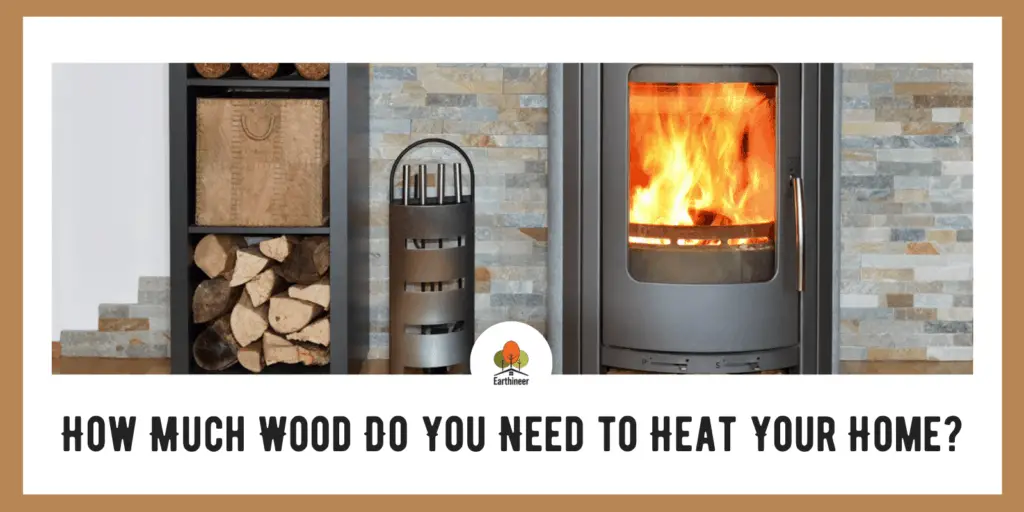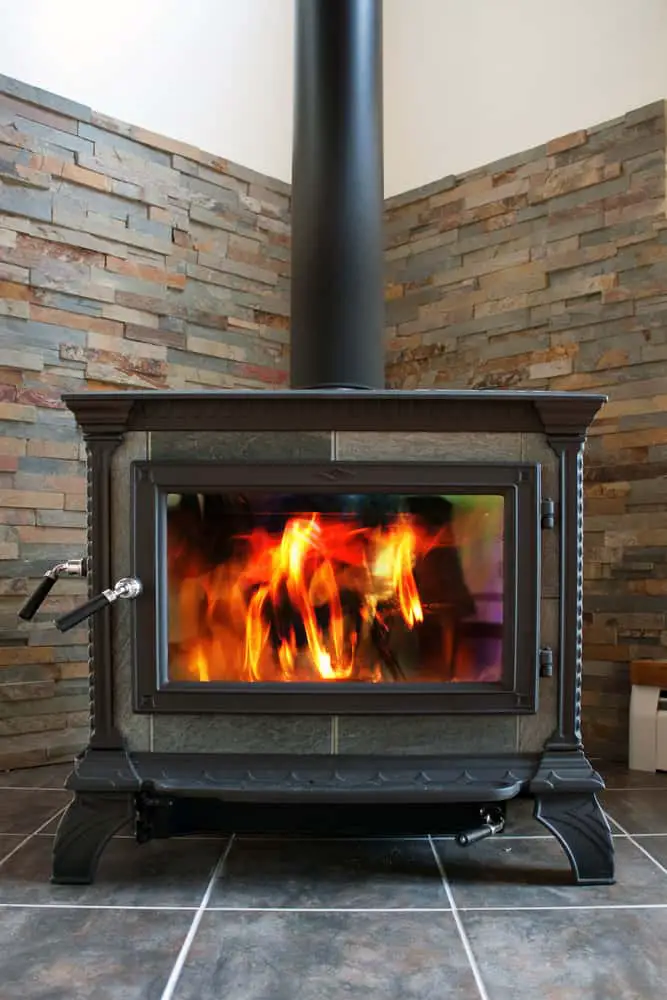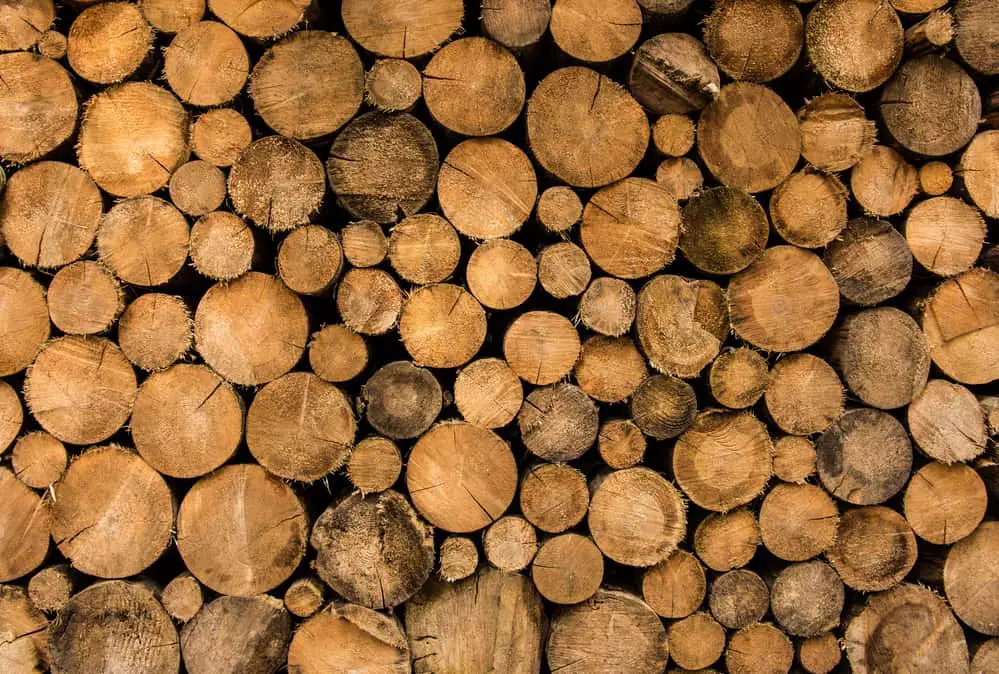When it starts to get a bit chilly in your home what do you do? Most people walk over to the wall thermostat, push a few buttons, and presto! The furnace or heater kicks on and within several minutes we are warm and comfortable again.

Of course, it was not always this easy to heat our homes. Coal was used as a fuel source to heat buildings and homes for quite some time, but for much of human history burning wood was the primary way we have kept warm.
It may surprise you to know that millions of people today still burn wood as a method for heating their homes. If you are thinking about heating your home in this manner, whether you live in a rural setting or a homestead, there is one important question that you will need the answer to. How much wood do I need?
First Things First
Like most questions, I am sure that you want a quick, concrete answer to how much wood you need to heat your home. Unfortunately, the answer is not easy or straightforward, although I could give you an answer now that you will not like but I will save that for the end of the article
The reason there is not a quick answer is that everyone’s situation is different and there are several factors that play into how much wood is needed. Two cords of wood may work great for one person, but it could be way off the mark for you. Speaking of cords of wood…
What is a Cord a Wood?
A cord of wood is a description for an amount of wood here in the U.S. which is where I am writing this article. It consists roughly of 128 cubic feet of wood.
To give you a better illustration of this, when a cord of wood is stacked it measures approximately four feet wide by four feet high by eight feet long.
Factors That Affect How Much Wood You Need
Okay, back to the question at hand. As mentioned above there are several factors that will determine how much wood you need.
Size of the Home
How large or small your home is will obviously be an important factor in the amount of wood you need. Generally speaking, the larger the home the more wood you will need to heat it.
The Efficiency of the Home
Another factor to consider is the efficiency of your home. A home that has old windows, bad seals around windows or doors, and poor insulation will require an immense amount of wood to keep warm.
Region You Live In
Where you live will play a big factor in how much wood you need. This is because the amount of wood needed will depend on the length and intensity of winters in your region.
Southernly regions in the USA typically experience mild winters where temperatures are tolerable during the day but colder at night. In these areas, wood may only need to be burned during the evenings or night.
However, as you travel north temperatures begin to drastically drop and it remains consistently cold during the winter. In these areas, wood will need to be burned around the clock to keep a home comfortable.
Type of Burner

What the wood is burned in and how the heat is distributed around the home is also important. A typical fireplace is far less efficient at warming a structure than a wood-burning stove.
With a fireplace, most of the heat travels straight upward and is lost through the chimney. Whereas with a wood-burning stove, the entire stove is heated and radiates that heat throughout a room.
Having blowers installed on a fire unit will greatly increase the distribution of heat.
Type of Wood
The last thing to consider when figuring how much wood you need is the type of wood you will be burning. I have met many people that do not realize this but not all wood is the same.
Wood can be broken down into two main categories, hardwood, and softwood. Hardwoods are denser which means they have less air in them, whereas softwoods are less dense and have more air. This means hardwood will burn longer which results in heat that will last longer.
How Much Wood?
As you can see from the above information it is difficult to give a definite, straightforward answer that is constant across the board.

However, through experience, research, and talking with many people I have come up with a ballpark figure. This figure is based on the following:
- You live in an average size home of 1,500-2000sq. feet
- The home has good windows, doors, seals, and insulation
- You experience an average Midwest winter
- You are burning wood as the only source of heat
With all the above in mind, my suggestion would be that you have no less than six cords of wood available.
FAQs
What is seasoned firewood?
Can green wood be burned indoors?
Additionally, greenwood will “crackle and pop” a lot when it is burned. This can cause hot embers to jump out of a fire.
How do you keep wood dry throughout the year?
Additionally, wood does not have to be stacked perfectly to the point there are no gaps between the pieces. Gaps between the wood promote airflow which helps to dry the wood out.
Wrap Up
If you have never burned wood to heat your home, then I would suggest talking to local people in your region that do use wood to heat their homes.
They would be the best source of information on the subject and can give you a good plan based on their own experiences.
Ultimately, the best answer is to store as much wood as you possibly can. You never know how long or hard a winter will be, and it is best to have too much firewood than to have to chop more wood in the middle of winter.
Plus, whatever wood is leftover means that much less you will have to prepare next year, and it will get used at some point.
Thanks for reading and stay warm!
If you heat your home with firewood, what have your experiences been like? Sound off in the comment section below and let us know!
